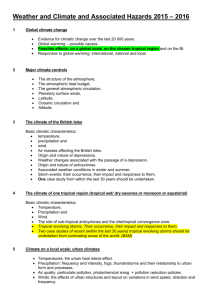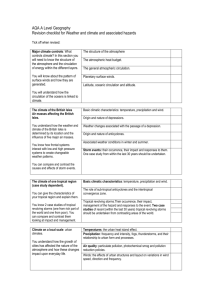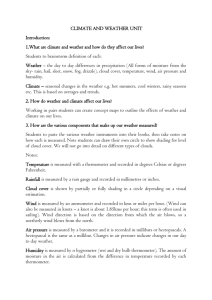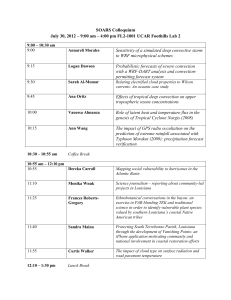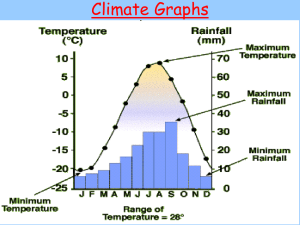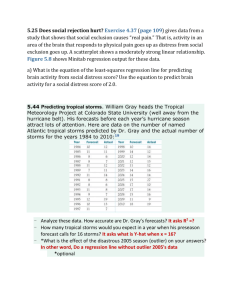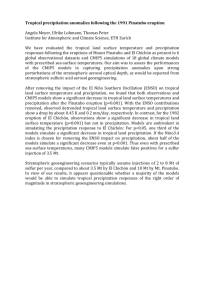PLC Geog3 Weather and Climate and Associated Hazards
advertisement
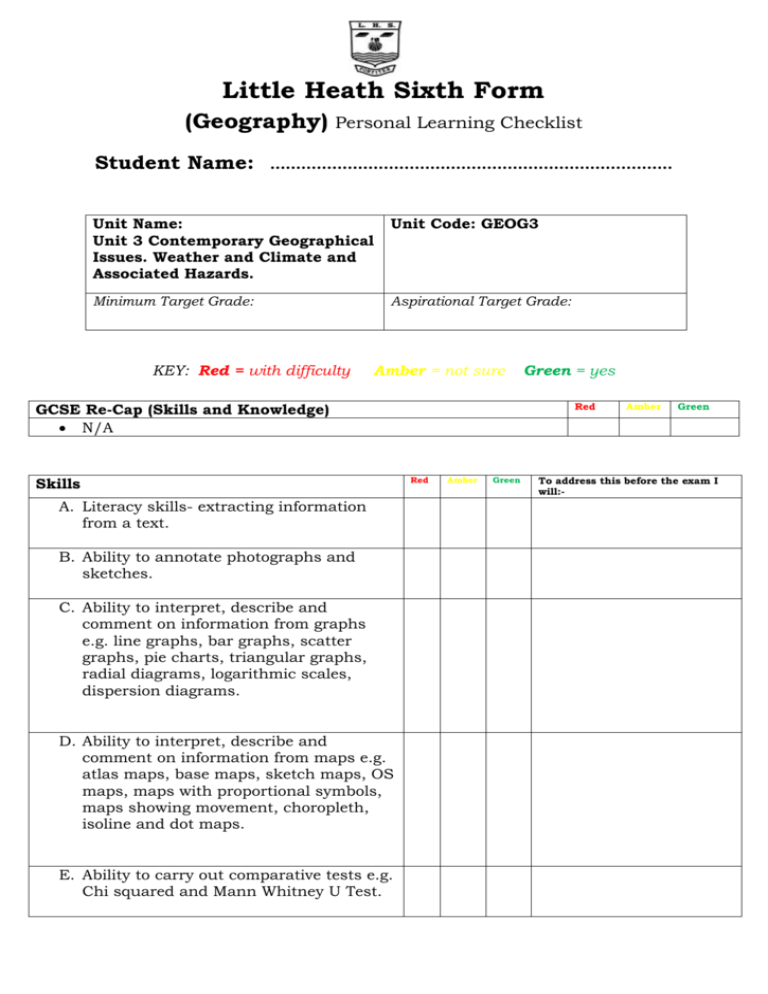
Little Heath Sixth Form (Geography) Personal Learning Checklist Student Name: ……………………….…………………………………..……… Unit Name: Unit 3 Contemporary Geographical Issues. Weather and Climate and Associated Hazards. Unit Code: GEOG3 Minimum Target Grade: Aspirational Target Grade: KEY: Red = with difficulty Amber = not sure GCSE Re-Cap (Skills and Knowledge) N/A Skills A. Literacy skills- extracting information from a text. B. Ability to annotate photographs and sketches. C. Ability to interpret, describe and comment on information from graphs e.g. line graphs, bar graphs, scatter graphs, pie charts, triangular graphs, radial diagrams, logarithmic scales, dispersion diagrams. D. Ability to interpret, describe and comment on information from maps e.g. atlas maps, base maps, sketch maps, OS maps, maps with proportional symbols, maps showing movement, choropleth, isoline and dot maps. E. Ability to carry out comparative tests e.g. Chi squared and Mann Whitney U Test. Green = yes Red Red Amber Green Amber Green To address this before the exam I will:- Knowledge/Specification (continued) Major climate controls 1. The structure of the atmosphere, the atmospheric heat budget, the general atmospheric circulation, planetary surface winds, latitude, oceanic circulation and altitude. The climate of the British Isles 1. Basic climatic characteristics: temperature, precipitation and wind. 2. Air masses affecting the British Isles. 3. Origin and nature of depressions. Weather changes associated with the passage of a depression. 4. Origin and nature of anticyclones. Associated weather conditions in winter and summer. 5. Storm events: their occurrence, their impact and responses to them. One case study from within the last 30 years should be undertaken. The climate of one tropical region (tropical wet/ dry savanna or monsoon or equatorial) 6. Basic climatic characteristics: temperature, precipitation and wind. 7. The role of sub-tropical anticyclones and the intertropical convergence zone. 8. Tropical revolving storms. Their occurrence, their impact, management of the hazard and responses to the event. Two case studies of recent (within the last 30 years) tropical revolving storms should be undertaken from contrasting areas of the world. Red Amber Green To address this before the exam I will:- Climate on a local scale: urban climates 9. Temperatures: the urban heat island effect. 10. Precipitation: frequency and intensity, fogs, thunderstorms, and their relationship to urban form and processes. 11. Air quality: particulate pollution, photochemical smog and pollution reduction policies. 12. Winds: the effects of urban structures and layout on variations in wind speed, direction and frequency. Global climate change 13. Evidence for climatic change over the last 20 000 years. 14. Global warming – possible causes. Possible effects: on a global scale, on the chosen tropical region (above) and on the British Isles. 15. Responses to global warming: international, national and local. REVISION Use the information on this checklist to make revision cards and notes Grade tracking: Grade Date Grade Date Grade Date Grade Date Grade Date Grade Date Note: You should discuss this checklist regularly with your subject teacher/mentor
